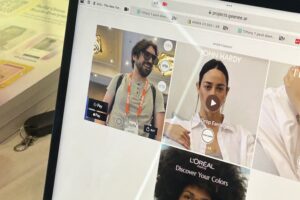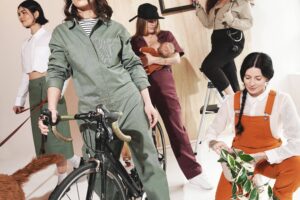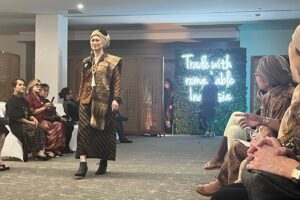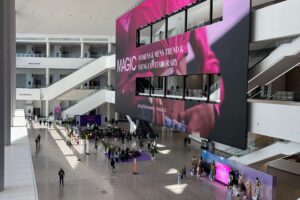In the bustling corridors of the Indonesian Consulate in Los Angeles, a dialogue between tradition and modernity is taking shape. Indonesia, with its myriad islands and the distinction of having the world’s largest Muslim population, is not just navigating but leading the conversation in the global fashion industry with its burgeoning modest fashion movement.
The narrative of Indonesia’s modest fashion is not a recent phenomenon; it is deeply rooted in the country’s history. Jeny, a representative from the Indonesian Trade Promotion Center Los Angeles (ITPC LA), elucidates this historical context. “Indonesia has been predominantly Muslim from the beginning,” she states, emphasizing the nation’s long standing Islamic identity. Yet, this identity is not monolithic. “Before Islam, we had kingdoms with Hinduism and Buddhism, but now we’re known as the biggest Muslim country,” Jeny adds, highlighting the religious and cultural syncretism that has shaped Indonesian society.
The evolution of Indonesian fashion mirrors this rich tapestry of history. “The hijab era began around 2011, marking a shift towards conservative attire,” Jeny recalls. But the narrative did not stop there. “By 2016, we embraced moderation, blending traditional values with modern sensibilities.” This shift is not just about clothing; it’s a reflection of Indonesia’s broader societal values, where modesty and modernity coexist harmoniously.
Diah Rezki Saputri of Sally AB Boutique brings this narrative to life through her designs, which are steeped in the traditional Lipa Sorbet fabric of South Sulawesi. “Our collections feature bold purples and oranges, embodying our cultural vibrancy,” she explains. The pandemic, while challenging, presented an opportunity to introduce Indonesian culture to a global audience. “Our diverse culture is our strength, and we aim to make it more recognizable worldwide,” Diah asserts. Her designs are not just garments; they are ambassadors of Indonesian heritage, telling stories of the archipelago’s diversity through color and fabric.
Bian Murphy’s story is one of resilience and cultural expression. Having moved to South Carolina in 2006, she found herself at a crossroads between tradition and her new environment. “Life is about choices,” Bian reflects. “I chose family, but the passion for fashion brought me back.” Her return to the fashion scene was inspired by the modest fashion initiative, and she now seeks to introduce traditional Indonesian fabrics to the US market. “Indonesian is not just Muslim; we have a mosaic of religions and cultures,” Bian points out, underscoring the inclusivity of Indonesian modest fashion.
Bian’s designs tell a personal story, like the collection inspired by a painting made by her son, Andhra. “It’s a love story, a narrative of first love,” she shares. This personal touch adds depth to her creations, making them more than just fashion statements. They are narratives of love, family, and the enduring spirit of creativity.

The question of modest fashion’s viability in the US market is raised by Bian. “Modest fashion is not just for Muslims,” she emphasizes. “It’s about style, comfort, and versatility.” Her success at a fashion show in Spartanburg, South Carolina, where she won a competition for emerging designers, showcases the potential of modest fashion in the US. With events like Modest Fashion Week in New York, the US market seems ready for a cultural infusion.
As Indonesian designers continue to innovate, they invite us to explore the beauty of diversity and the potential for a global fashion revolution. The question remains: Is the US ready to embrace the rich tapestry of Indonesian modest fashion? This movement is more than a trend; it’s a cultural dialogue that beckons us to appreciate the artistry and stories woven into the very fabric of Indonesian style. It’s a testament to the nation’s ability to adapt, innovate, and inspire, offering a model for how tradition can inform and enrich global modernity.

As Indonesian designers continue to innovate, they invite us to explore the beauty of diversity and the potential for a global fashion revolution. The question remains: Is the US ready to embrace the rich tapestry of Indonesian modest fashion? This movement is more than a trend; it’s a cultural dialogue that beckons us to appreciate the artistry and stories woven into the very fabric of Indonesian style. It’s a testament to the nation’s ability to adapt, innovate, and inspire, offering a model for how tradition can inform and enrich global modernity.
















